Hyacinth beans: an ornamental climbing plant for your garden
Hyacinth beans (dolichos, climbing lilac) is a climbing plant, it resembles lilac... But this plant belongs to the legume family. In natural conditions, climbing lilacs grow in the mountains of Africa. From these areas, the plant spread throughout Canada and Europe.
Content:
- Hyacinth beans: description and varieties
- Plant propagation and planting seedlings
- Landing in open ground
- Care advice
- Diseases and pests
- The use of dolichos
Hyacinth beans: description and varieties
Have dolichos leaves can be of a variety of colors ranging from moderate purplish red to green. They are large, heart-shaped. The flowers are small, there are up to 40 of them per inflorescence. The flowers are light pink, crimson, snow-white, Persian blue. They can be in 2 different shades. One flower lives for 3 days, after which it fades, but since there are many flowers in the inflorescence, this is little noticeable.
The plant blooms from July to frost. The fruits look very beautiful - pods with a rich brown-burgundy or purple color.
Popular varieties:
- "Pink Moon", grows up to 4 m long, the variety has bright green leaves and flowers in shades of magenta and purple. The advantage of the variety is that the beans do not fall off the branches, they hang until frost.
- "Lilac cascade" decorate loggias and verandas with these flowers. The variety has increased frost resistance. Compared to others, these plants branch out more. One plant can have up to 30 shoots, the leaves grow very densely. The branches reach 5 m in length.
- Variety @ Purple Garlands @ grows up to 6 m in height, has many leaves and bright purple flowers. Collected flowers stand in the water as a bouquet longer than other varieties. The heart-shaped leaves have a red tint.
Plant propagation and planting seedlings
Hyacinth beans are annual plants, so they are propagated only seeds... Seeds are sown in open ground in mid-April and the plantings are covered with polyethylene film.
The seeds are sown for the second time in late May and early June.
At this time, the sown dolichos is not covered. For landing on seedlings seeds are planted in the house in early April. A month later, the seedlings are planted in the garden.
To speed up seed germination, you can:
- Pour boiling water over them.
- File with a special nail file.
- Sand a little with fine sandpaper.
- Pierce the beans with a needle.
- Then the seeds are placed in warm water and soaked for 24 hours. It is recommended to change the water 3-4 times.
The plant loves earth, which has neutral properties. Therefore, it is advised to pour chalk or ash into pots with earth. Seeds are planted to a depth of 4-5 cm. The space between plants is 30 cm.
The apartment should have an air temperature of +20 ° C and above. Water the beans once a week. For hardening in May, the seedlings are taken out to the loggia for several hours. Plants can be tied to supports.
Landing in open ground
The planting site should be sunny, and the soil should be loose and fertile. The plant does not tolerate soil that has acidic or alkaline characteristics. In the fall, the soil is dug up and 2-4 kg of compost, 40 phosphorus, 30 g of potassium per 1 sq. m. In the spring, 60 g of ash per 1 sq. m. are added to the ground. m.
A distance of 20 cm is maintained between the pits.You can also pour a teaspoon of ash or shells from eggs that are ground into flour into each hole, this will reduce the acidity of the soil.
Seedlings are planted in mid-May, by which time the ground warms up enough, since the curly lilac does not tolerate frost absolutely.
The roots of the plant are very delicate. Therefore, they are planted very carefully. A support is placed near the seedling and the dolichos is tied up with thick threads or thin ropes.
Care advice
14 days after disembarkation seedlings fruits begin to set. Dolichos needs abundant and regular watering, especially when landing. An adult plant can easily tolerate dry air, but the soil must be constantly moist.
The plant especially needs moisture when flowering and tying the pods.
If there is not enough water, then the buds, flowers and pods of the hyacinth beans fall off. The hyacinth beans are watered daily. If there is a heat and drought, then the beans are watered 2-3 times a day.
Top dressing dolichos:
- They are fed complex mineral fertilizers... Nodule bacteria that multiply on the root system take nitrogen from the air, because of this mineral fertilizer should have a low nitrogen content.
- While the plants are growing, fertilizers are applied once every 2 weeks.
- It is impossible for fertilizers to fall on the leaves of the dolichos, as burns may appear on them.
- Dry fertilizers should be scattered near the roots, and solutions are applied when watering with a watering can, while trying not to get on the plants, but only on the soil.
The appearance of small yellow spots on the leaves means that the vines lack potassium. Harvest when the pods are dry. The harvested beans remain viable for 5 years.
Diseases and pests
Liana can be affected by fungal leaf spot. In this case, it is necessary to reduce watering and treat the culture with a solution of copper sulfate, colloidal sulfur, Bordeaux liquid.
Also, dolichos can get sick with real powdery mildew... The disease appears with excessive soil moisture and heat, with a large amount of nitrogen, too thick plantings, dry soil near the root system.
The disease is detected by twisted leaves and gray powdery spots.
If the damage is not very severe, you can spray the plant with an emulsion of copper and soap: pour 300 g of soap into a bucket of hot water (9 l), at the same time add 30 g of copper sulfate to a jar with 1 liter of water. Then they are mixed, cooled and used. You can spray the hyacinth beans with a solution of 100 g of colloidal sulfur in a bucket of water (10 L). If the infection is very strong, then 1 time in 2 weeks is sprayed with a 0.4% solution of tseneb, 0.25% benomyl.
Peststhat attack flowers:
- You can find aphids - small green, brown, black insects. The leaves of the affected plant roll up, and then dry up. You can try washing the aphids off the plants with a hose.
- When damaged by nematodes, outwardly hyacinth beans seem to be underdeveloped, the leaves have thickened petioles, and galls form on the roots. Nematodes are eliminated by spraying the plants 2-4 times, observing an interval of 3-5 days with 0.02% mercaptophos solution. But this drug does not destroy eggs, as they are covered with chitinous membranes.
The use of dolichos
Curly lilacs decorate verandas, gazebos, walls of houses, hedges, loggias. Cut flowers stand in water for a very long time, so they are used for beautiful bouquets.
Also, beans contain useful substances for people. They are eaten with a decrease in immunity, with liver diseases and diabetes mellitus. The fruits contain proteins, fats, vitamins, various acids, macro- and microelements.
They are used for:
- lack of vitamins in the body
- poor immunity
- with high cholesterol levels, as they lower it
Purple beans are harvested from the pods at both their milky maturity and when fully ripe. Soups, salads, side dishes are prepared from them. They go well with seafood.
Since the tops contain a large amount of nitrogen, the climbing lilac can be used as a good fertilizer for garden.
The tops are placed in compost, where they are re-heated, and then used as fertilizer. Caring for the plant is quite simple, you just need to remember to water it, weed it weedshilling bushes.
More information can be found in the video.



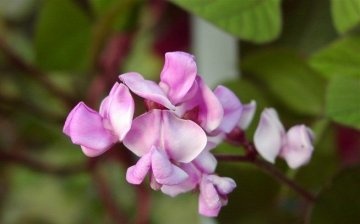
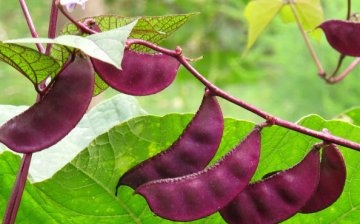
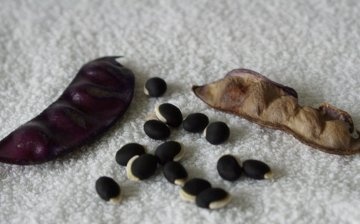
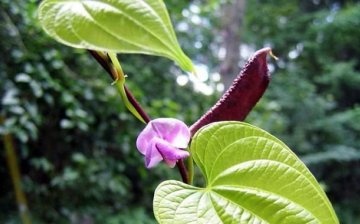

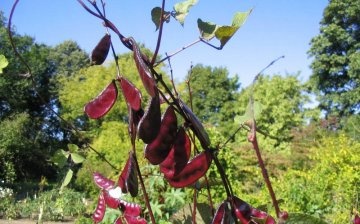
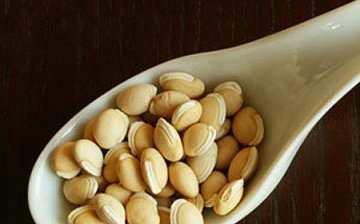







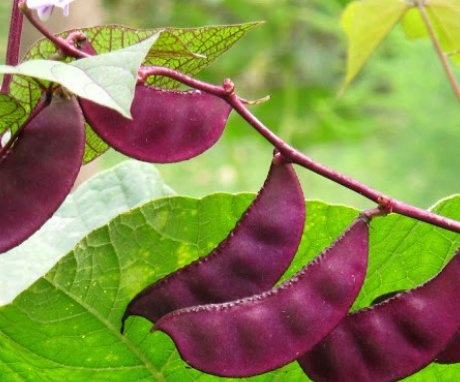
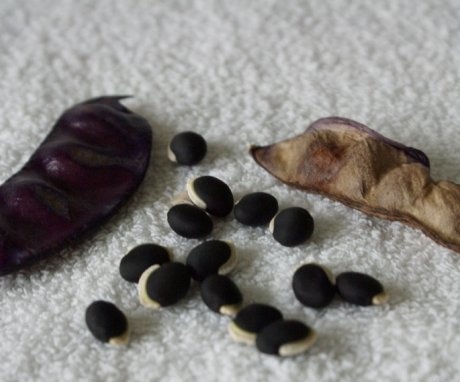
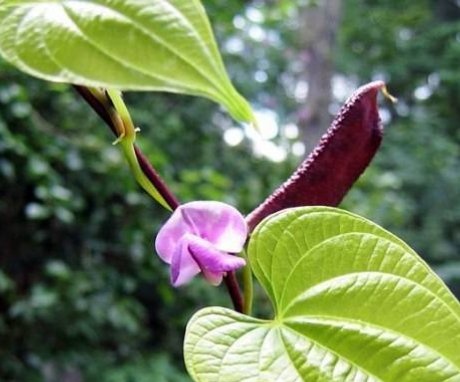



I wonder if there are any reliable producers who don’t cheat when buying seeds? I bought it twice, and both times it was not beans that grew, but quite ordinary decorative beans. It's a shame.
They took it off the tongue - absolutely the same thing with me. Several times they tried to plant it in the garden - and all the time it was a deception. It's a pity, in fact - I won't buy any more - do I need it? And after all, you will not present anything - how to prove something?